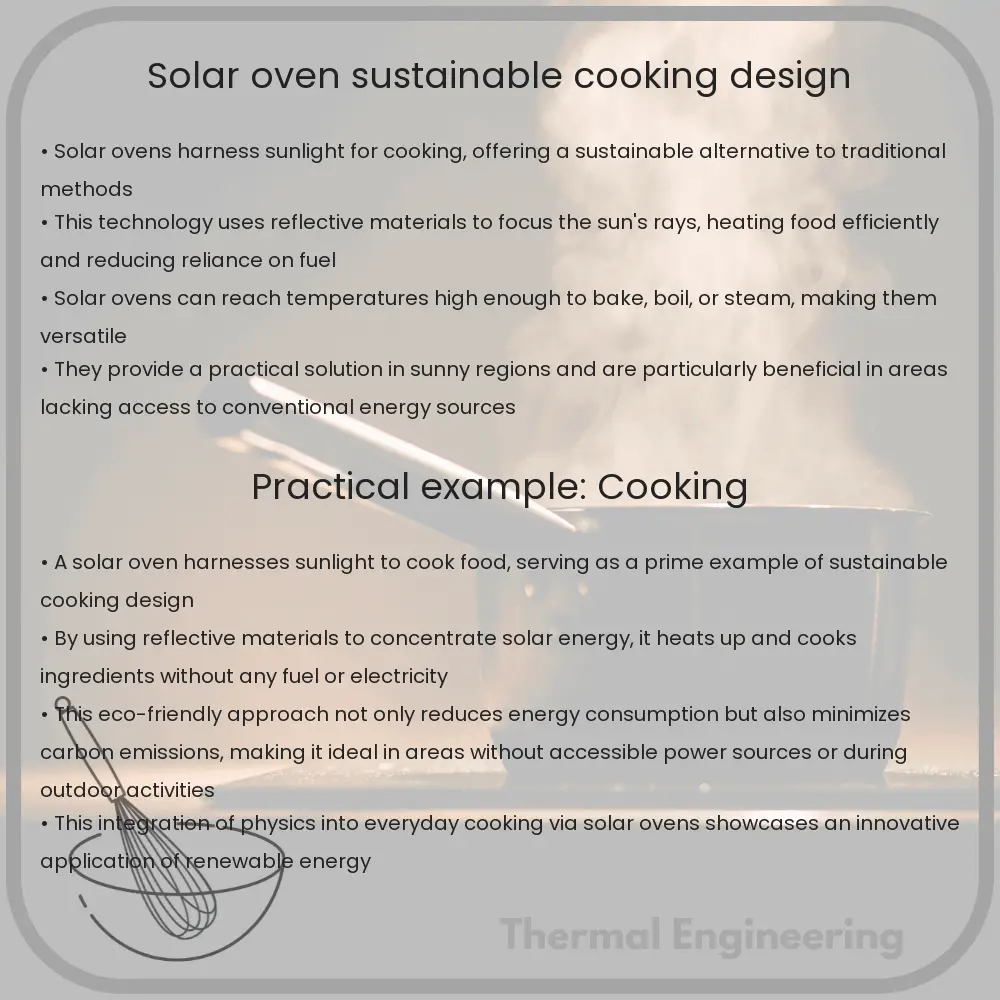Learn how solar ovens use reflection, concentration, and insulation to cook food sustainably using only sunlight.

Introduction to Solar Ovens
Solar ovens are a sustainable cooking solution that harness the power of the sun to cook food or sterilize water. They use the basic principles of solar energy capture, concentration, and conversion to generate heat without the need for conventional fuel sources like electricity or firewood.
How Solar Ovens Work
Solar ovens function by employing three main scientific principles: reflection, concentration, and insulation.
- Reflection: Reflective surfaces, typically mirrors or shiny metal, direct solar radiation towards a focal point.
- Concentration: The oven’s design often includes a parabolic shape or multiple reflective panels to concentrate sunlight into a small cooking area, greatly increasing the heat intensity.
- Insulation: To keep the generated heat from escaping, solar ovens are equipped with insulating materials which help in maintaining the temperature necessary for cooking.
Design and Components of a Solar Oven
The typical solar oven might appear simple at first glance, but its efficient design is key to its functionality. Here are the main components:
- Reflective Surface: This surface is crucial in capturing and redirecting the sun’s rays into the oven’s interior. Materials often used include aluminum foil or reflective mirrors.
- Insulating Materials: These can range from simple styrofoam to more advanced polyurethane panels, aiding in heat retention.
- Transparent Top: Made of glass or a durable, heat-resistant plastic, this cover allows sunlight to enter while preventing heat from escaping.
- Cooking Pot or Tray: Typically painted black to increase heat absorption, this is where the food is placed for cooking.
Benefits of Solar Ovens
Solar ovens offer numerous advantages, particularly in terms of sustainability and environmental impact:
- No need for fuel: By relying solely on sunlight, these ovens eliminate the need for electricity or biomass fuels.
- Reduction in emissions: Solar cooking translates to fewer greenhouse gases and pollutants since there’s no combustion of fuels.
- Cost-effective: After the initial investment, the operating cost is virtually zero as it doesn’t require ongoing expenses for conventional energy sources.
- Low-maintenance: Solar ovens have fewer moving parts and do not require as much maintenance as traditional cooking appliances.
Limitations and Considerations
While solar ovens are innovative, there are some limitations and practical considerations to keep in mind:
- Weather dependence: Their efficiency greatly depends on the availability of sunlight. Overcast conditions can significantly lengthen cooking times or render the oven unusable.
- Longer cooking times: Generally, solar ovens take longer to heat up and cook food, which can be a drawback for users accustomed to more immediate cooking methods.
- Geographical limitations: Their performance is best in regions with high solar insolation, like tropical or dessert climates.
Conclusion
Solar ovens exemplify how engineering principles can be applied to create solutions that are both environmentally sustainable and practical. As technology progresses, the efficiency and usability of solar ovens will continue to improve, making them a viable option for more people worldwide. By harnessing the power of the sun, these ovens offer a promising pathway towards reducing our environmental footprint and promoting sustainable living practices.